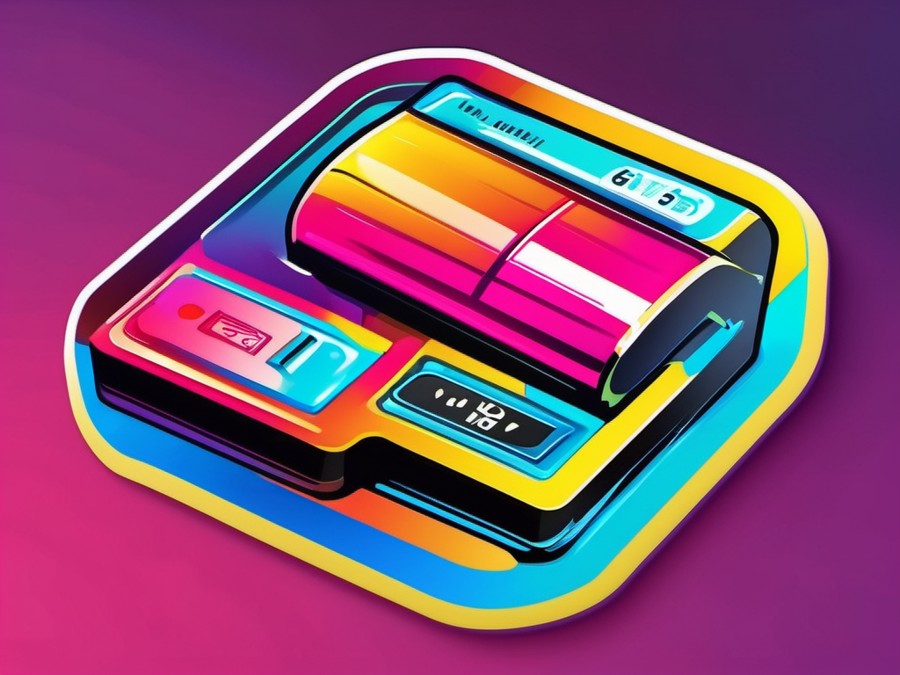· Charlotte Will · Batteries & Chargers · 9 min read
What is Battery Management System (BMS) and Its Role in Lithium-Ion Batteries?
Discover the critical role of a Battery Management System (BMS) in optimizing lithium-ion batteries for safety and performance. Explore real-world applications, debunk myths, and learn about the future of BMS technology. ```

Understanding the Basics of Lithium-Ion Batteries
The Rise in Popularity
Lithium-ion batteries have become the go-to power source for a variety of devices, from smartphones to electric vehicles (EVs). Their high energy density and low self-discharge rate make them ideal for applications where efficiency and longevity are crucial. But with great power comes great responsibility, especially when it comes to managing these batteries safely and effectively.
How Lithium-Ion Batteries Work
Lithium-ion batteries function by moving lithium ions between the positive and negative electrodes, typically through an electrolyte. This movement generates electricity that can be used to power devices. The chemistry and composition of these batteries are highly sensitive, requiring precise balancing and monitoring to prevent issues such as overheating or swelling.
What is a Battery Management System (BMS)?
Definition and Importance
A Battery Management System (BMS) is an electronic system designed to monitor, protect, and optimize the performance of rechargeable lithium-ion batteries. Think of it as the brain of your battery pack, ensuring that everything runs smoothly and safely.
Key Components of a BMS
A typical BMS consists of several key components, including a microcontroller, analog-to-digital converters (ADCs), voltage and current sensors, and communication interfaces. These components work in harmony to collect data, analyze it, and make decisions that keep your battery functioning at its best.
How Does BMS Work in Lithium-Ion Batteries?
Monitoring Key Parameters
A BMS continually monitors critical parameters such as voltage, current, temperature, and state of charge (SoC). This real-time data collection is essential for predicting potential issues and maintaining optimal performance.
Real-Time Data Collection
By constantly collecting data, the BMS can detect anomalies early and take corrective actions. For example, if the temperature starts to rise too quickly, the BMS can trigger cooling measures or limit charging to prevent overheating.
Cell Balancing Techniques
One of the essential roles of a BMS is to ensure that all cells within the battery pack are balanced. This involves redistributing charge among cells to prevent any single cell from being overworked or underused. Balancing is crucial for maintaining the overall health and lifespan of the battery.
Ensuring Safety Features
Safety is paramount when it comes to lithium-ion batteries, and a BMS plays a pivotal role in implementing safety features.
Overcharge Protection
Overcharging can lead to significant problems, including reduced lifespan and even fire hazards. A BMS prevents overcharging by monitoring the voltage levels and stopping the charging process when it reaches a set point.
Thermal Management Systems
Thermal management is about keeping the battery at an optimal temperature. Too hot, and you risk damage; too cold, and performance suffers. A BMS carefully monitors temperature and can activate cooling or heating measures as needed.
Charge and Discharge Control
Efficient charge and discharge control ensures that your battery operates within safe limits. The BMS regulates the current flowing in and out of the battery, preventing sudden surges that could cause damage.
Advanced Features of BMS for Lithium-Ion Batteries
Predictive Maintenance Algorithms
Modern BMS systems use advanced predictive maintenance algorithms to forecast potential issues before they occur. This proactive approach can significantly extend the lifespan of your battery.
Wear Leveling
Wear leveling is a technique used to distribute the charging and discharging cycles evenly across all cells, preventing any single cell from wearing out faster than the others.
Remaining Useful Life Estimation
By continually analyzing data, a BMS can estimate the remaining useful life (RUL) of your battery. This information is invaluable for planning maintenance and replacement schedules.
Communication Protocols
Effective communication is key for any BMS to function efficiently. This includes both internal communication within the system and external communication with other devices or systems.
Wireless Connectivity
Wireless connectivity allows for real-time monitoring and control, making it easier to integrate the BMS into larger systems. This is particularly useful in applications like EVs and grid-tied energy storage systems.
Data Logging and Analysis
Data logging enables the BMS to store historical data, which can be analyzed to identify trends and patterns. This information is crucial for optimizing battery performance over the long term.
The Role of BMS in Extending the Lifespan of Lithium-Ion Batteries
Mitigating Factors That Affect Lifespan
Several factors can impact the lifespan of lithium-ion batteries, including temperature fluctuations, charging habits, and depth of discharge. A BMS helps mitigate these factors by implementing safeguards and optimizing operations.
Temperature Regulation
Extreme temperatures can degrade a battery’s performance and lifespan. A BMS regulates temperature to keep the battery within its optimal operating range, thus extending its life.
Charge Cycle Management
Deep discharge cycles can shorten battery lifespan. A BMS manages charge cycles efficiently, preventing over-discharge and ensuring that the battery remains within safe operating limits.
Enhancing Reliability and Performance
Reliability and performance go hand in hand. A well-designed BMS enhances both, making your battery more dependable and efficient in the long run.
Minimizing Internal Resistance
Internal resistance can reduce the efficiency of a battery. By minimizing this resistance, a BMS helps to maintain optimal performance levels.
Optimized Charging Strategies
Optimized charging strategies ensure that the battery is charged efficiently and safely. This includes techniques like slow charging during early stages to prevent overheating and fast charging during later stages when the battery is close to full capacity.
Implementing BMS for Optimized Battery Performance
System Integration
Integrating a BMS into your system involves both hardware and software considerations. The BMS must be compatible with the battery cells and other system components to function effectively.
Hardware Compatibility
Ensure that the BMS hardware is compatible with your battery cells in terms of voltage, current, and communication protocols.
Software Configuration
Software configuration is crucial for tailoring the BMS to your specific needs. This may involve setting thresholds for voltage, current, and temperature, as well as configuring communication settings.
Calibration and Fine-Tuning
After initial setup, ongoing calibration and fine-tuning are necessary to ensure that the BMS continues to perform optimally.
Initial Setup
During initial setup, you’ll need to configure the BMS based on your battery specifications and usage requirements. This step is crucial for setting a solid foundation for long-term performance.
Ongoing Adjustments
As your battery and system evolve, it’s essential to make ongoing adjustments. This could include recalibrating sensors or updating software settings to account for changes in usage patterns or environmental factors.
Real-World Applications of BMS in Lithium-Ion Batteries
Consumer Electronics
In consumer electronics like smartphones and laptops, a BMS plays a vital role in ensuring safety and prolonging battery life.
Smartphones and Laptops
The high energy density of lithium-ion batteries makes them ideal for powering portable devices, but this also means they require careful management to prevent issues like overheating and swelling.
Electric Vehicles (EVs)
For EVs, a BMS is essential for managing the large battery packs that power these vehicles.
Battery Packs in Cars and Buses
EV battery packs consist of hundreds or even thousands of individual cells, all of which need to be managed effectively to ensure safe and efficient operation.
Energy Storage Systems
In energy storage systems, a BMS is crucial for maintaining the reliability and longevity of batteries used in grid-tied applications.
Grid-Tied Solutions
Energy storage systems are vital for ensuring stable power supply in grid-tied solutions, where the BMS helps to optimize performance and enhance safety.
Addressing Common Misconceptions About BMS
Myth: BMS is Only for Large-Scale Systems
Truth: Applicable Across All Sizes
A BMS is beneficial in all applications, regardless of scale. Even small batteries can benefit from the safety and performance optimization provided by a BMS.
Myth: BMS is an Optional Component
Truth: Essential for Safe and Efficient Operations
In reality, a BMS is not just an optional extra; it’s a critical component for ensuring the safe and efficient operation of lithium-ion batteries.
Case Studies: Successful Implementation of BMS
Tesla’s Approach to Battery Management
Tesla is renowned for its innovative approach to battery management. Their BMS systems are designed to be highly effective and reliable, ensuring the safety and longevity of their EV battery packs.
Innovations in EV Batteries
Tesla’s innovations include advanced thermal management, predictive maintenance algorithms, and real-time data analysis. These features help to optimize battery performance and extend lifespan.
Industrial Applications
In industrial settings, a BMS can significantly enhance the reliability and efficiency of machines and equipment that rely on lithium-ion batteries.
Enhancing Machine Longevity
By managing factors like temperature and charge cycles, a BMS can help extend the life of industrial machinery, reducing downtime and maintenance costs.
The Future of BMS in Lithium-Ion Technologies
Emerging Trends and Innovations
The future of BMS is looking bright with several emerging trends and innovations.
Artificial Intelligence Integration
AI integration is set to revolutionize BMS by providing even more accurate predictions and proactive maintenance strategies.
New Materials and Chemistries
Advances in materials science are leading to new battery chemistries that promise higher energy densities and improved safety. These new materials will require even more sophisticated BMS to manage effectively.
Regulatory and Environmental Considerations
As the use of lithium-ion batteries becomes more widespread, regulatory and environmental considerations are becoming increasingly important.
Safety Standards
Governments are implementing stricter safety standards to ensure the safe use of lithium-ion batteries in various applications. A BMS is crucial for meeting these standards.
Sustainable Practices
Sustainability is a key concern in the battery industry. BMS helps to extend battery lifespan, reducing waste and promoting more sustainable practices.
Conclusion
Recap of BMS Importance
A Battery Management System (BMS) is indispensable for the safe and efficient operation of lithium-ion batteries. From consumer electronics to electric vehicles and energy storage systems, a BMS plays a pivotal role in ensuring optimal performance and longevity.
The Continuing Evolution of Lithium-Ion Technology
The field of lithium-ion technology is continually evolving, with new innovations and advancements on the horizon. As this technology advances, so too will the importance of BMS in managing and optimizing these powerful batteries.
FAQs
What are the primary functions of a BMS in lithium-ion batteries?
A BMS in lithium-ion batteries monitors key parameters such as voltage, current, temperature, and state of charge (SoC), ensures safety features like overcharge protection, manages cell balancing, and optimizes charge and discharge processes.
How often should a BMS be maintained or replaced?
The frequency of maintaining or replacing a BMS depends on the usage and environmental conditions. Generally, it’s recommended to recalibrate sensors periodically and update software settings as needed.
Can a BMS improve the overall efficiency of lithium-ion batteries?
Yes, a BMS can significantly improve the overall efficiency of lithium-ion batteries by optimizing charging and discharging processes, managing temperature fluctuations, and preventing overcharging or deep discharge.
What are some common issues that a BMS can prevent?
A BMS can prevent common issues like overheating, swelling, reduced lifespan due to deep discharge cycles, and fire hazards associated with overcharging.
How does the implementation of a BMS differ between small and large battery systems?
The implementation of a BMS differs in terms of complexity and scale. Small battery systems may use simpler, integrated BMS solutions, while large systems require more sophisticated and modular BMS to manage multiple cells effectively.




